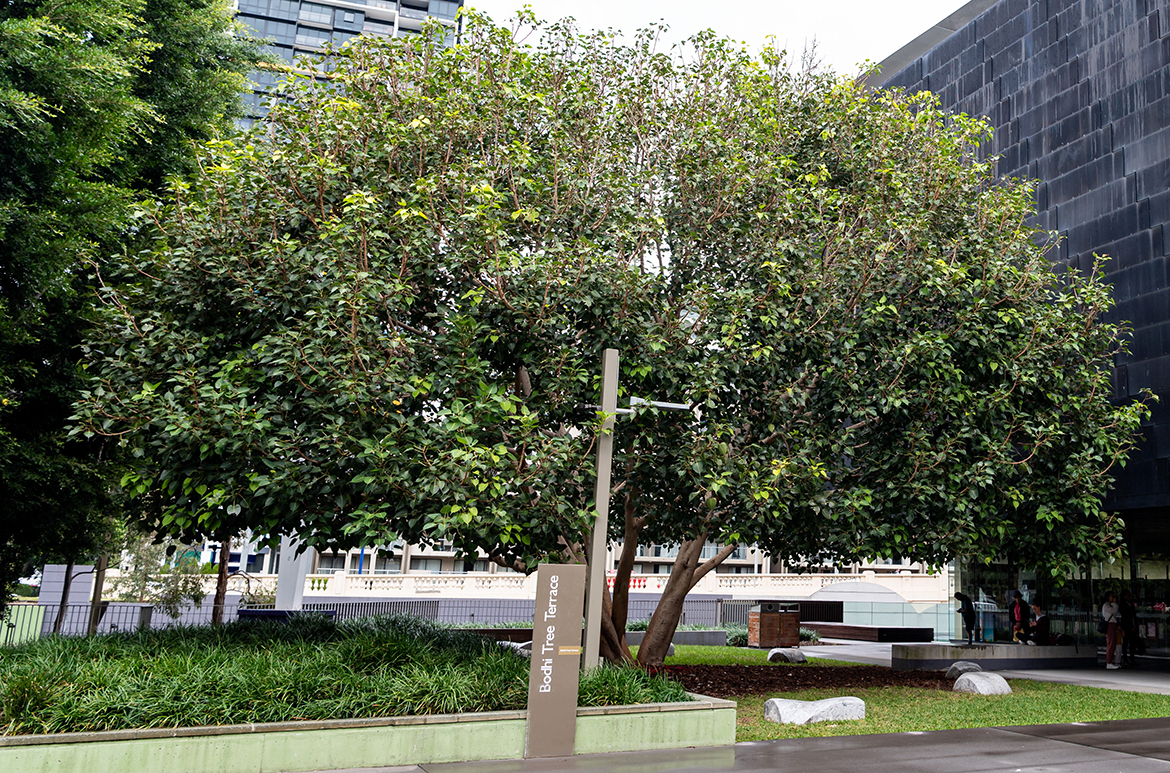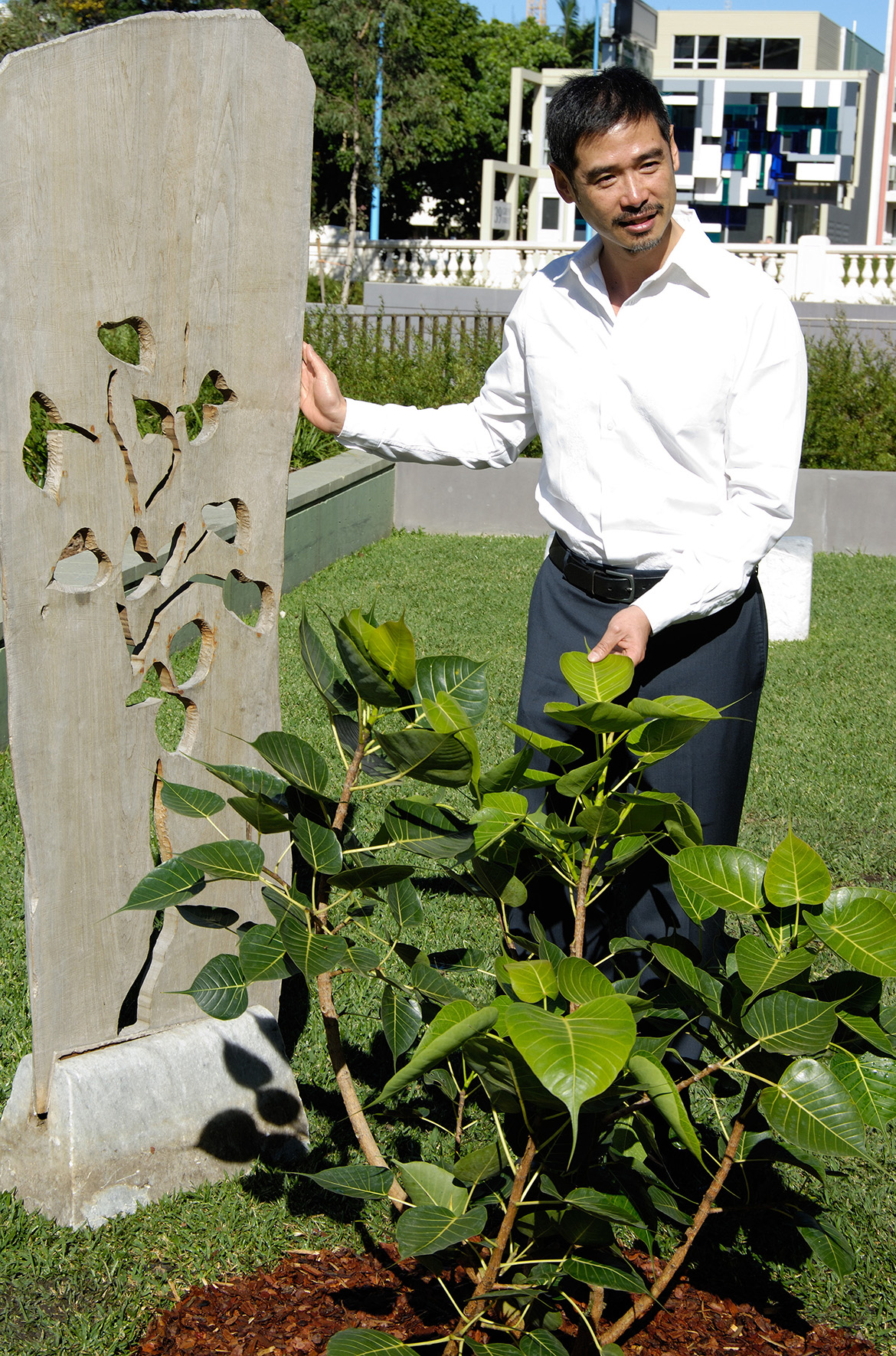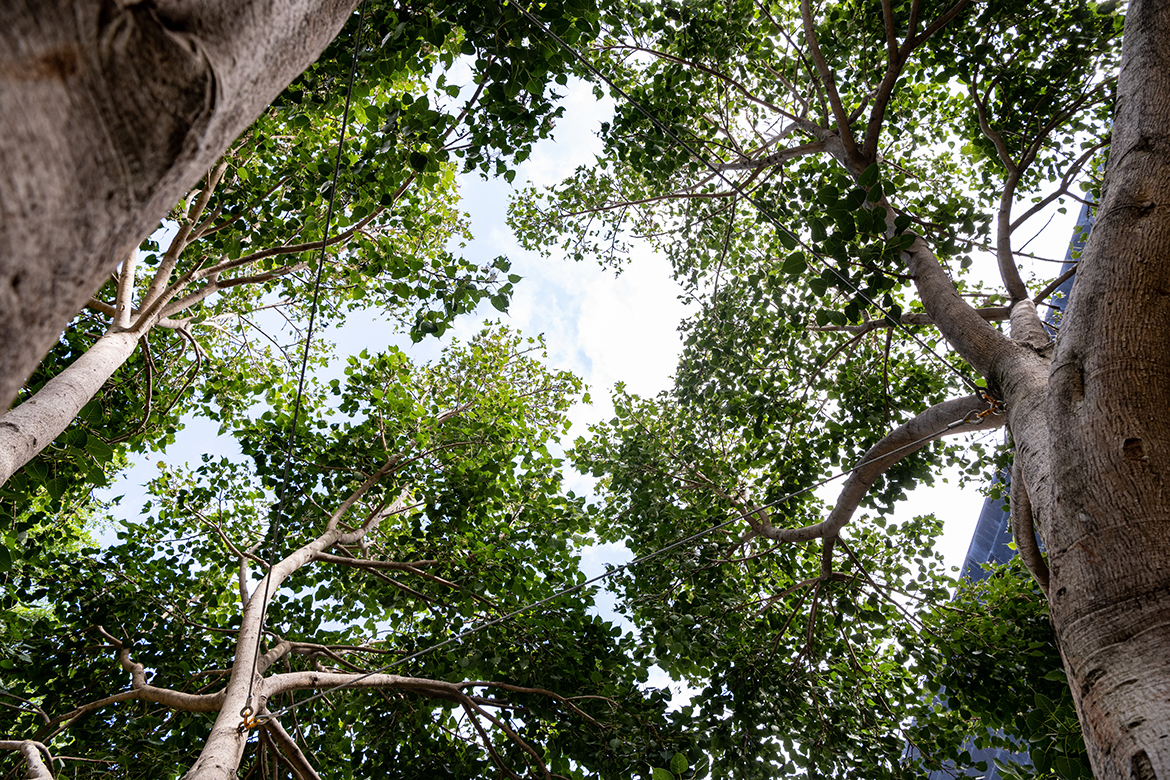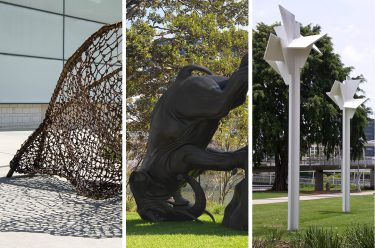Since 2008, a Bodhi tree (Ficus religiosa) has become a natural part of the urban landscape outside the Gallery of Modern Art. Today, in conversation with the architecture, grounds and public art of the surrounding precinct, the towering tree creates a quiet canopy for gathering and contemplation, its lofty branches punctuating views to the sky and its thousands of heart-shaped leaves (illustrated) casting dappled light below. The Bodhi tree’s harmony with the surrounding environment, however, conceals its historical and spiritual significance as it symbolises ancient beliefs and a series of journeys through time and across lands and seas.
Bodhi Tree


The Bodhi tree’s story starts around 2500 years ago in a town now known as Bodh Gaya in northern India, where the young prince Siddhartha Gautama achieved enlightenment under a related fig tree. He became known as ‘Buddha’, ‘the awakened one’, and the sacred tree took the name ‘Bodhi’, meaning ‘awakening’. Following the death of Buddha, a sapling from the holy tree was taken to Sri Lanka and planted in the city of Anuradhapura in 249 BCE. It was named Jaya Sri Maha Bodhi and is one of the most sacred trees in the world. It is also considered the oldest living tree with a recorded date of planting.
In the early 2000s, Taiwanese-born artist Lee Mingwei approached Raja Maha Temple, the custodian of the ancient tree in Sri Lanka, and after considerable consultation, the head priest took a cutting from the tree and gave permission for it to be planted at Kurilpa Point, the site of GOMA.1 The sapling was grown in the temple grounds for a year before it was ready to travel, when the monks and worshippers held ceremonies to prepare for its departure.
Bodhi Tree planting, 2008


Through the Bodhi Tree Project, Mingwei explores how a public sculpture normally remains vulnerable to the elements, while the Bodhi tree has become part of its environment, weathering subtropical downpours and heatwaves, and growing to a great height.2 Over the years, the small sapling has grown into a prominent natural landmark, and every year members of the Chung Tian Temple perform a blessing ceremony as part of Buddha’s Birth Day Festival.3 The tree is a unique living artwork, swaying in the breeze, changing colour with the seasons and dropping its leaves on the grass below as a community grows and evolves with it.
Endnotes
1 The stretch of the Maiwar (Brisbane) River where the cultural precinct is located is known as Kurilpa Point, named after the Kuril (native water rat) and signifying the Indigenous history and significance of the site.
2 Lee Mingwei, quoted in ‘Lee Mingwei: Brisbane interview’, QAGOMA YouTube, 15 December 2010, <youtube.com/watch?v=x70jnMQy3Fg>, viewed June 2022.
3 The sapling was first taken to Fo Guang Shan Chung Tian Temple (Priestdale) and the members of the temple have since acted as cultural custodians of the Bodhi tree. The annual Bodhi Tree blessing is led by the abbess and venerables of the temple.
Featured image: Looking up through the branches of the sacred Bodhi Tree / Photograph: C Callistermon © QAGOMA
#QAGOMA



I love the concept of a living work of art.
I am hand stitching Bodhi leaf shapes and also designing a kit or workshop programme for them. The history of the Bodhi tree written here is the most concise and informative I have found so far!